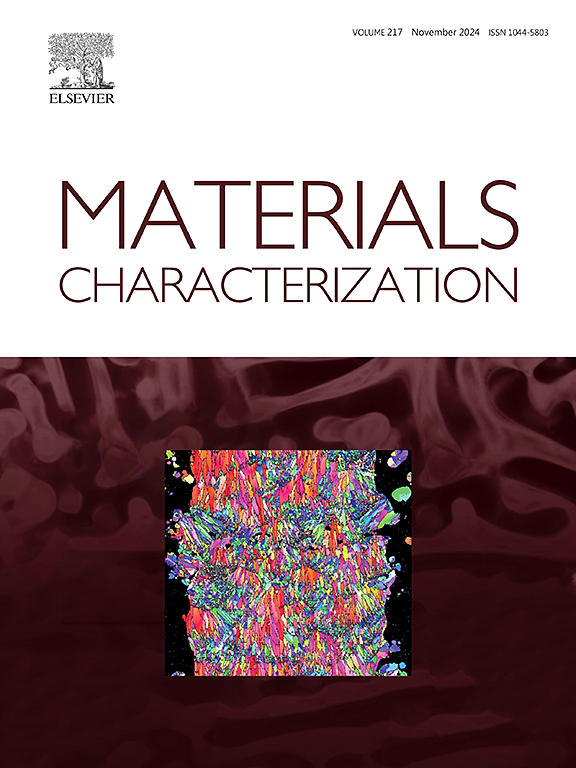Crystallographic texture variation in laser beam-welded CoCrFeNiMn
IF 4.8
2区 材料科学
Q1 MATERIALS SCIENCE, CHARACTERIZATION & TESTING
引用次数: 0
Abstract
This study examines the crystallographic texture and residual stress variation of a laser-welded CoCrFeNiMn high-entropy alloy (HEA) plate. The HEA plate was welded using a disc laser with a maximum power output of 4 kW, which was also equipped with a bright line weld module and a dual-core fiber with a diameter of 100 and 400 μm, respectively. The welding direction was aligned with the rolling direction. The texture was investigated via high-energy X-ray beam and EBSD. To investigate the crystallographic variation in the welded CoCrFeNiMn HEA plate, the textures were examined in the fusion zone (FZ), the heat affected zone (HAZ), and the base material (BM). The texture observed in the FZ was a combination of the textures present on ±0.1 mm positions from the weld centerline. The texture identified on each side of the centerline of the FZ comprises fibers oriented 〈100〉 // to the transverse direction, exhibiting a ± 10° rotation around the rolling direction. The texture observed in the BM exhibits a rolling-type texture, represented by {110}<112> brass, {112}<111> Cu, and {123}<643> S components, with a dominant {110}<112> brass component and a sharpness of 4.8 mrd. The microhardness profiles indicate a slight decline in hardness, from 260 HV0.1 for the BM to 240 HV0.1 in the FZ. The mechanical properties of the welded samples exhibited a slight reduction in ultimate tensile strength (from 900 ± 15 MPa to 830 ± 10 MPa) and elongation (from 18 ± 3 % to 13 ± 3 %). This decrease in mechanical properties could be attributed to the presence of large grains in the FZ, the dissolution of precipitation, and alterations in texture. This alloy displays excellent weldability, making it a promising candidate for engineering applications.

求助全文
约1分钟内获得全文
求助全文
来源期刊

Materials Characterization
工程技术-材料科学:表征与测试
CiteScore
7.60
自引率
8.50%
发文量
746
审稿时长
36 days
期刊介绍:
Materials Characterization features original articles and state-of-the-art reviews on theoretical and practical aspects of the structure and behaviour of materials.
The Journal focuses on all characterization techniques, including all forms of microscopy (light, electron, acoustic, etc.,) and analysis (especially microanalysis and surface analytical techniques). Developments in both this wide range of techniques and their application to the quantification of the microstructure of materials are essential facets of the Journal.
The Journal provides the Materials Scientist/Engineer with up-to-date information on many types of materials with an underlying theme of explaining the behavior of materials using novel approaches. Materials covered by the journal include:
Metals & Alloys
Ceramics
Nanomaterials
Biomedical materials
Optical materials
Composites
Natural Materials.
 求助内容:
求助内容: 应助结果提醒方式:
应助结果提醒方式:


